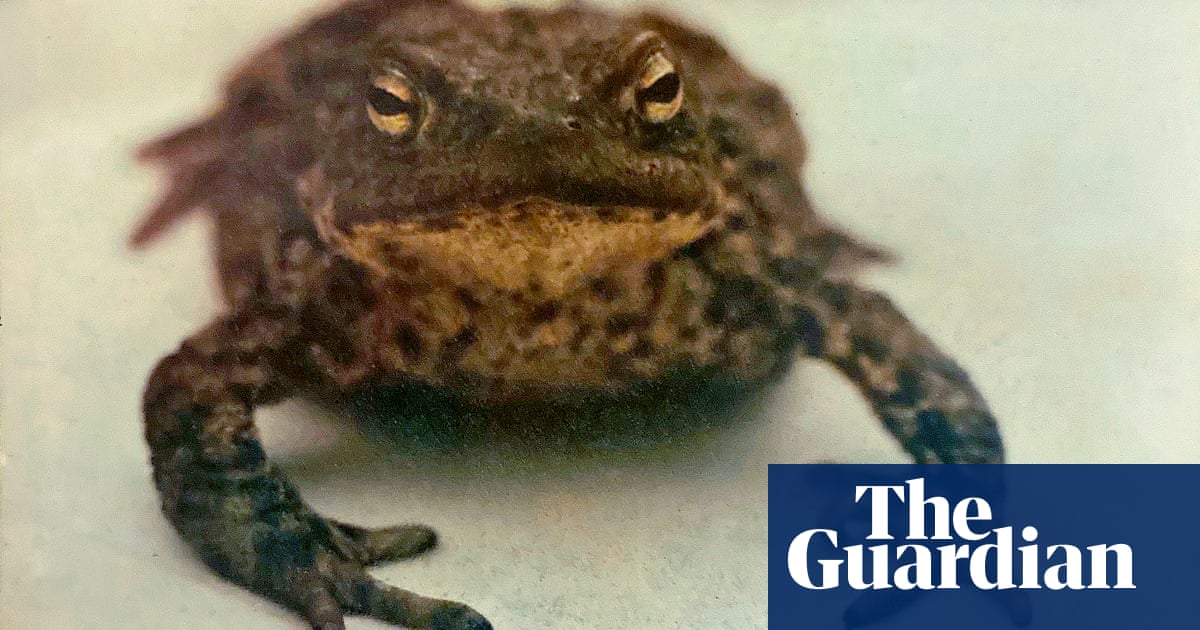
Anne-Marie, Sydney, Australia. Specialities: cats, dogs, rabbits, ferrets, goats, birds, pigs and horses
I’ve always preferred animals to people. I’ve never met an animal I didn’t like, whereas there are plenty of humans I could do without. As a young girl growing up in rural Queensland, I had my own Lassie dog – Sam – stolen from me, when I was six. My siblings were older, and Sam was my best friend. He went missing before microchips and registrations – I’m almost certain we found the family who took him, but that was never proved. It always stayed with me; I never got closure. I felt like I’d failed him, which is why I dedicate my life to tracking down other pets.
During Covid in Australia we saw a massive increase in pet thefts. Obviously with increased demand comes the problem of supply. People who’d lost work saw an opportunity to make money; people who couldn’t afford to buy legitimately turned to the black market to save cash. For the first time, shelters were empty – pets became a commodity. Would-be thieves took their chance. Right now, we’re getting 50 inquiries a week.
We see all sorts: theft by finding and premeditated planned stealing, which usually involves a break and enter or trespass as well. In some cases, pets are stolen by someone known to the owner – maintenance workers or contractors who take an opportunity to pinch a pet. And then we are also seeing trusted people doing it – pet-sitters who you’d think you could trust.
I don’t use my surname publicly, for security reasons. We’ve had to retrieve pets from unsavoury people who I’d prefer not to know my details. Ours is the only service in Australia that offers a comprehensive search strategy. Across the country we have teams of former police investigators who worked in homicide and missing persons. We have tracking dogs and drone operators, too. The most important part of what I do is profiling, you can’t take a cookie-cutter approach to every case: breed, age, animal, circumstance and the owners are always unique. So we start by going through the basics on a call. Microchipped? Collared? What’s your pet like? This helps us make sure a picture is formed. Then we get to work, with all sorts of tools.
A few months back I was cooking dinner when I got a call from a distraught woman near Byron Bay whose little cavoodle had vanished. From the profiling, I knew the best chance was to get a thermal drone in the air – and fast. By 6am, a commercially licensed pilot with state-of-the-art kit was in the air. Bingo! A tiny heat signature picked him up hidden in long grass.
We mostly deal with dogs and cats. But we’ve also had rabbits, ferrets, goats, birds, pigs and horses. One of our first cases was a parrot called Tricks who went missing from a Sydney suburb – a series of mistakes saw her fly away. We launched a targeted social media campaign. A colleague and I searched the area ourselves to ensure the bird’s return. And then there was Smasher – a goat who was stolen from a sanctuary. Nasty people took her to train their dogs to hunt. She had an ear injury, but we got her back. Now she’s living her best life.
Managing emotions is important. I’m careful never to get someone’s hopes up. I’ve retrieved several deceased animals, which is always tragic. But I believe closure is the most important thing. Not knowing leaves people looking to point the finger of blame. We’ve had clients on antidepressants and anti-anxiety medication.
We’re not miracle workers or superheroes, but we get results 80% of the time. And our clients are grateful, we get Christmas cards and thank you gifts – we stay in touch.
My main advice to other owners is stay vigilant: gone are the days when we can assume people will do the right thing. Putting a pet in a collar with a tag is basic but important. Update a microchip to make sure your details are correct. Secure your yard and don’t leave your pet tied up alone in public. If you can, invest in CCTV. And if your pet is stolen, don’t spend days driving around at random – call the experts.
Karin TarQwyn, Nebraska, USA. Speciality: dogs
When you have 27 animals like I do, you’re constantly counting. I know what it takes to keep track of all your pets. Before I became a pet detective, I spent years working as a PI, still in search and rescue but for people. I’m not sure I was very good and I certainly didn’t enjoy it – always chasing after people who often didn’t want to be found.
Then in 2004, my rescue dog, Jack, went missing from my 160-acre Oklahoma ranch. One night there was a loud clap of thunder and I saw Jack in my mind’s eye: I knew something was wrong. It took me four months to track him down, when a rancher 50 miles north of me saved him from being put down.
It was such a grievous experience – worse for me than divorce or losing grandparents. It sent me into a place of despair. In that time, I realised there must be others in the same situation who I wanted to help. I officially launched my agency in 2005. That was a big risk, given I was on the cusp of another divorce. For the first 12 or 13 years I was a lone ranger, spending most of my time by myself on the road.
Now, when we get a query, it could be by phone, text, email, or social media, I start by talking to the pet owner. When they realise I’m a professional, I feel their sigh of relief. That’s when we begin to review the case. I ask a specific set of questions. Then I’ll design a strategy. I’m up front with people. Sometimes I will tell them the answer isn’t to hire me. If there is a limited budget and I think a pet has been stolen, I might advise them it’s a better bet to put all their money towards a reward. I’ll often donate materials and encourage volunteers to help if I can.
A lot of people who get into this work do so because they love dogs and kitties and think it’s fun to work with animals, but you’re basically a detective-cum-counsellor. Much of the time we are working with humans who are experiencing the most grievous situation of their lives.
It’s very rare I’ll go out on the ground if there’s a dog that has been taken by another person, whether maliciously or otherwise. Instead, we’re starting a campaign to find witnesses while creating community awareness. Our aim is to let the public know we are interested in the pet’s recovery, and with cooperation comes a reward. With stolen pets we have found that the ransom rarely falls below $3,500. One couple in the San Francisco Bay Area I worked with gave up their wedding to pay the $5,000 figure demanded after we spent six weeks on their dog’s tail. To them it was worth every cent to have Zephyr home.
If a dog is on the run – or the roam as we call it – we’ll move into action and get boots on the ground. The glitz of it all, the fairy dust, is when we turn up with tracking dogs. We’ll only do that when we have a plan. Our K9s are scent-specific tracking dogs. They follow the trail of a single subject or animal.
We’ll drive to the location, review the point of escape, (POE), and find out where the pet was last seen. We have already asked the owner to provide us with three articles that have been in contact with their pet, preferably a collar, harness or dog-sweater – something which has been up close to the animal’s body.
Depending on the situation, we’ll then select the right dog – maybe it’s one that specialises in footstep tracking, or it could be an air-scent dog. We start the K9 at PLS (Point Last Seen), give them the scent and wait a minute for them to find the most recent trail.
Social media has made a huge difference in my work. The internet means dogs found by honest, well-meaning folks can easily be identified and returned. That means I rarely see those simpler cases these days. They resolve themselves. Instead, I’m left with the darker, more complicated, situations. It’s fair to say those keep us all on our toes – and paws.
Robert Kenny, UK. Speciality: dogs and cats
At the heart of what I do is determination and detail – there’s nobody half-hearted on our books. I see what I do as being like a surgeon doing an operation in a hospital. Everything must be done exactly right.
In 2007, I rescued a drowning dog in California and found the owner a day later. It was covered on national TV. When I came back to the UK, I decided to give up my job as an accountant and train to be a pet detective right away. I set up my company to work across Europe, given how quickly animals can be moved around. Fourteen years later and I’ve recovered thousands of missing pets.
I can assess a case very quickly: years of experience means I can work out the chances of recovery right away. The investigation starts the moment I get a call. We don’t use posters like many people, we just don’t need to. My years of experience guide my nose. We have a database of missing pets in the UK and Ireland, we can go back and see what patterns might have started to form. Both pet and human psychology definitely comes into it, the more you do this, the more you learn.
My expertise means I’ll take calls for all sorts and advise as best as possible. I’ve been asked about everything from rabbits to reptiles, and years back all types of exotic pet. Aside from dogs and cats, and the occasional horse, we rarely go in search of other animals these days.
Our first port of call is always to inform the police of our operations, in case we encounter difficulties. If we find ourselves in danger, we might need support to pull out. We start with CCTV, but look to customs, vehicle registration and bank cards – everything is traceable. I can’t go intoany more details, those are as sensitive as you might expect.
It was a hobby for me in the early days. Back when I started out, barely 30% of dog cases we’d get were stolen. Today, that figure sits at about 95%. Now we run summer camps for budding pet detectives because it’s nonstop. Some are taken to order, for resale or breeding, others for a personal vendetta out of spite. Not everyone reports the crime, so the figures are murky – but my best guess is around 125 dogs a week are stolen in the UK and Ireland. I’m not one to point to specific stories, I’m not sentimental, but for me it’s cases with elderly animals or elderly owners that I enjoy solving the most.
British law simply doesn’t protect owners – usually the worst-case scenario will see any caught thieves punished with a small fine, before they simply move on to the next job. If someone is desperate to steal your pet, just make it as close to impossible as you can.
Sharon Morris, New Hampshire, USA. Speciality: cats and birds
Doing things with my pets has always been a passion of mine. When my mushing dogs passed away, I got myself a Dachshund. OK, I thought, what can he do? I bought a book called Dog Detectives by Kat Albrecht. Right away I was intrigued. I used to be a registrar within the school system. When I faced retirement, I needed a new thing.
I looked online and signed up for an intense course. What I started to learn was fascinating: did you know a cat that is allowed outdoors has an inbuilt GPS? Even if they’re transported for miles, they’ll often come back in a straight line unless an obstacle – say a major highway – gets in their way. Indoor cats who’ve snuck out, meanwhile, are unlikely ever to be hiding further than 50ft from your home.
After that, I started volunteering with the lost and found department at my local ASPCA. Now I take around 200 calls a year. It seemed in my local area, lost dogs were covered, but nobody was focused on cats, so I got to work.
I was lost at first, when I went out solo. I’d scroll through Facebook looking for posts about lost animals asking people to call me. Most ignored me, but some picked up the phone. So I started to share advice, not just offering my services. That’s when people started to listen to what I had to say.
When I get a call to say, “My cat is missing,” I need their story: what kind of cat is it? What’s its personality? Does it love getting into people’s faces or does it hide whenever company comes round? Overweight cats seem to come home sooner. Has it ever been outside?
They say the golden window for tracking down a missing person is within the first 72 hours; with cats moving quickly, a similar approach will also lead to the best results. But if they’re not found immediately, don’t give up: hiding cats can stay hidden for weeks on end before needing to venture out, desperate for food and water. Knowing a cat’s personality will determine nearly everything I do.
Cats that often go outside won’t get lost easily within a few acres of their territory. If they’ve gone missing, there’ll be a reason. They could be trapped in a garage or maybe another animal has freaked them out. They might have jumped into a vehicle and accidentally hitchhiked. If you ever happen to find a cat in your car, uninvited, then turn around and take them back to where you last parked – back to their territory – and let them out.
And then there are thefts, which around my area are at epidemic levels. People think that if a cat is walking in their yard, it’s automatically a stray. Actually, it’s probably just taking a walk. People think of themselves as its saviour and grab it by any means possible. Often, they think they’re doing good by taking it inside, but they’re not.
Many of the calls I get are from these good samaritans. I tell people to make a thin paper collar with their phone number on and tape it to the cat’s neck and then let them go. You’ll likely get a call from a grateful neighbour wanting to find out what’s happened.
If your cat’s theft seems suspicious, I’ll help people make handouts and knock on every door. We stick them on petrol pumps, have them shoved in sandwich bags. I call it shaming: shame the person who has your cat into letting it go or giving it back. I get cases like this a few times a month. One woman told me she was putting up signs on telephone posts along her street, when a neighbour appeared on his drive holding the cat. Apparently they had thought the animal was “cold”.
Lots of people charge for these services, but I do it voluntarily. It’s funny, I do lots of my work online or over the telephone; many of the people I help have no idea who I am. That’s how I sometimes find myself sitting at church, surrounded by people talking about this person who helped them get their cat back. Knowing that was me feels pretty great.












